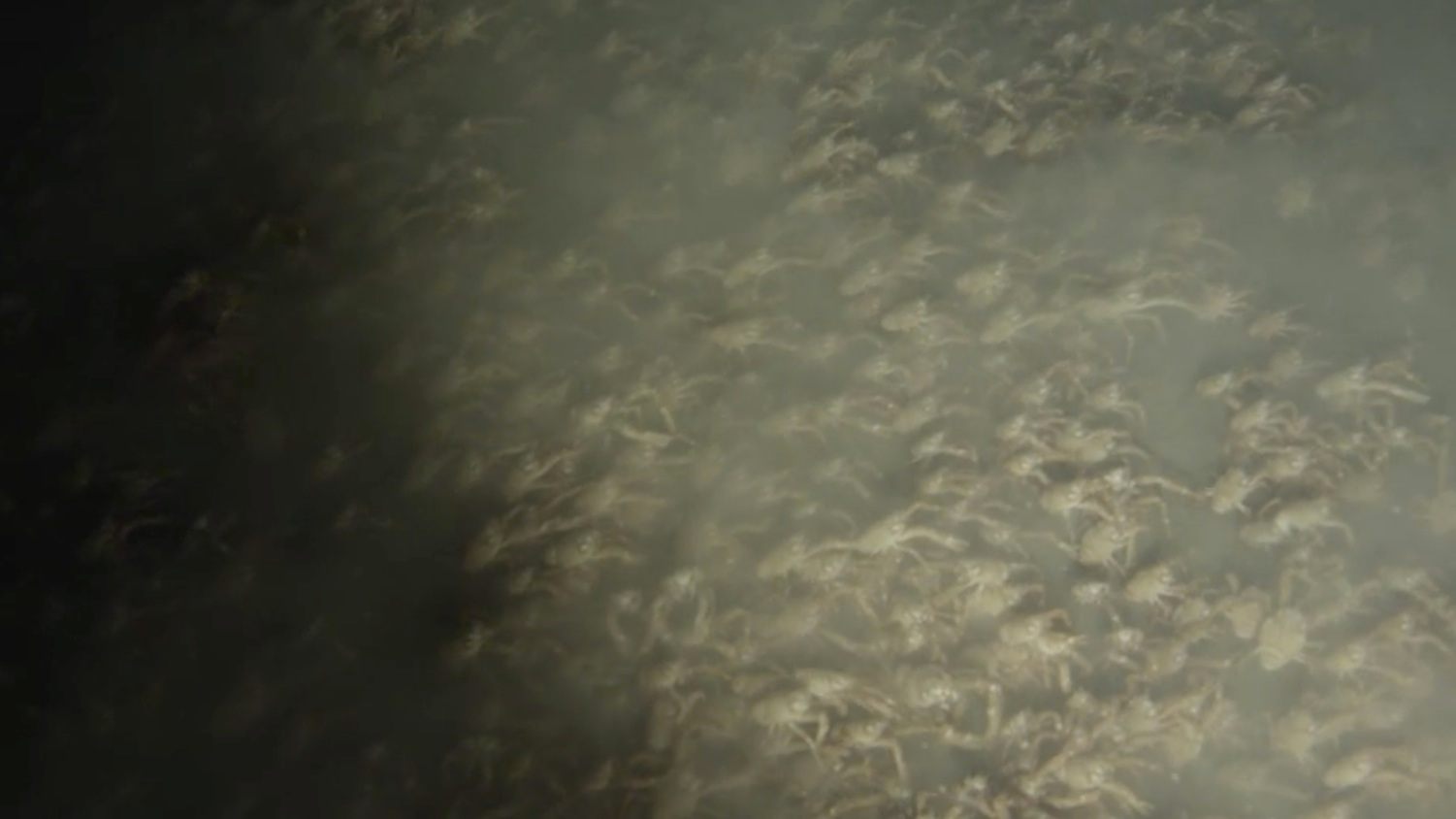Watch Thousands of Tiny Crabs Stampede Across the Sea Floor
Even jaded researchers were “mesmerized” by the swarm.

Crab stampede! Run! (Photo: Woods Hole Oceanographic Institute)
Counting up octopi and tailing sea turtles is all in a day’s work for ocean biologists. But last year, biodiversity researchers off the coast of Panama were thrilled to come across an unusual underwater event—a massive crab party, with thousands upon thousands of small crustaceans stampeding across the the sea floor.
While submarining in the Hannibal Bank Seamount last April, the researchers came across an unusual layer of murk, and dove deeper to investigate. “As we slowly moved down to the bottom of the seafloor, all of a sudden we saw these things. At first, we thought they were biogenic rocks or structures,” lead author Jesús Pineda said in a Woods Hole Institute press release. “Once we saw them moving—swarming like insects—we couldn’t believe it.” Pineda and his team published their results in PeerJ this month.
Later DNA analysis revealed the crabs to be Pleuroncodes planipes, also known as “red crabs” or “tuna crabs”—shrimp-sized, lobster-shaped crustaceans that are easily carried off by currents, and eat plankton they catch in the micro-hairs on their legs.
Not only were these crabs hanging out in unusually large numbers, they were also much further south than P. planipes has ever been found. Pineda theorizes that low-oxygen conditions might protect the crabs from their many predators, which include whales, porpoises, squid, sea birds, and large fish.
They don’t have to worry about humans, though—most of us just want to watch their swarm skills on YouTube.
Every day, we track down a fleeting wonder—something amazing that’s only happening right now. Have a tip for us? Tell us about it! Send your temporary miracles to cara@atlasobscura.com.











Follow us on Twitter to get the latest on the world's hidden wonders.
Like us on Facebook to get the latest on the world's hidden wonders.
Follow us on Twitter Like us on Facebook